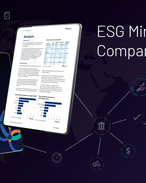Two events last week provided a glimpse of how the recovery process will work, as it always has in the past, one step forward and half a step back.
The first sign of improvement came in the form of an upbeat address by BHP Billiton boss Andrew Mackenzie at the Melbourne Mining Club dinner in London.
But before getting to Dr Mackenzie’s prescription for optimism, it’s worth a look at the sort of bad news that will disturb investors and prolong the recovery process.
The big negative last week was the shock downgrade by Australia’s leading gold miner, Newcrest, which admitted that its accounts were a mess. It was a confession that, unfortunately, arrived after the market got wind of a $6 billion problem, the size of the company’s asset-value write downs.
That small matter of timing, and the heavy share trading ahead of the formal announcement, means that Newcrest’s senior management will now spend a few fruitless days answering questions from the corporate cops about who said what, when, and to whom.
Officially, Newcrest’s business review became public knowledge at 9.19am on Friday. Unofficially, as a few angry investors have pointed out, there appears to have been some early share trading ahead of the event.
After starting the week strongly at a price of $14.40, Newcrest rose to a respectable $15.58 on Tuesday – at which point someone rang a bell and the stock started to retreat sharply, three days ahead of confession time.
By the close of business on Tuesday, Newcrest was down to $15.15. By close on Wednesday, it was $14.35, and then down to $13.36 on Thursday – a price which, significantly, was the low for the day and 15% below the Tuesday high of $15.58.
Newcrest fell further on Friday, touching a multi-year low of $11.40 before staging a recovery to end the week at $12.35. This was in a day of heavy trading that saw 12.8 million shares change hands, the second-heaviest trading days of the past 12 months.
What particularly annoyed some people was the flurry of investment advisory notices published ahead of that Friday confession. One prominent stockbroker, Charlie Aitken from Bell Potter, told the Australian Financial Review that the events leading up to the formal announcement should be fully investigated.
A starting point for the corporate cops could be downgrades issued by assorted brokers, including one on Tuesday in which the broker cut its Newcrest target price from $18 to $12, and another on Wednesday from $18.30 to $13.
How timely was that, 33% and 29% price target reductions just 72 hours and 48 hours ahead of the formal delivery of the bad news.
Meanwhile, as the Newcrest cock-up was dominating investor chatrooms, Dryblower continued to decode what Mackenzie had said a few days earlier, a process that led him to believe we are in the final stages of the crash.
Whether recovery starts in the next few months or early next year is probably irrelevant, because the important thing is that it is becoming possible to answer the question that everyone is asking: “are we there yet?”
To understand why Mackenzie’s words are so important, first consider who he is, a dour Scotsman not prone to outbursts of irrational exuberance. Then consider his job as the world’s top miner with access to information that the rest of us dream about, including one-on-one conversations with China’s Premier, Li Keqiang.
“Extremely reassured” is how Mackenzie described the future outlook for resources demand after speaking with one of the men with the power to sign China’s cheque book, and who is prepared to continue signing the cheques to buy the raw materials to ensure ongoing growth.
“There was a very clear signal as far as he was concerned this is the only way China’s success can continue on a relatively unbroken path of increasing urbanisation,” Mackenzie said at the London dinner.
“We had banter about prices, how the rebalancing already happened and I said you’re getting a bit of a bargain and he said I assure (the) resources industry we need more.”
While not quite from the horse’s mouth, that report from Mackenzie on Chinese mineral demand, coupled with other signs such as small mining stocks trading at close to cash backing and project deferrals inhibiting future supply, are the sort of evidence required to underpin the recovery as it slowly takes hold.
Will anyone blow a whistle and announce the formal start of the recovery?
Obviously not, you just have to keep an eye open for the signs – in much the same way some observant stockbrokers kept their eyes (and ears) open ahead of Newcrest blowing its downgrade whistle.

























